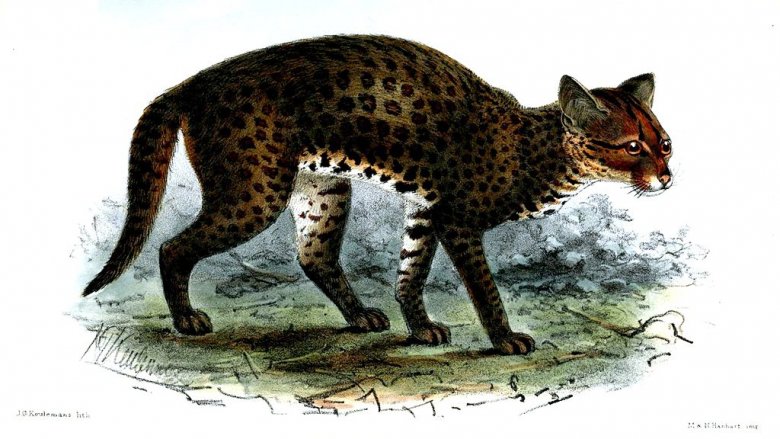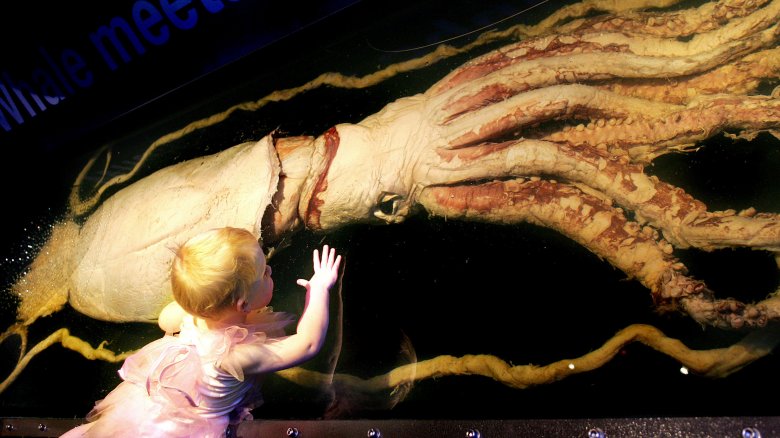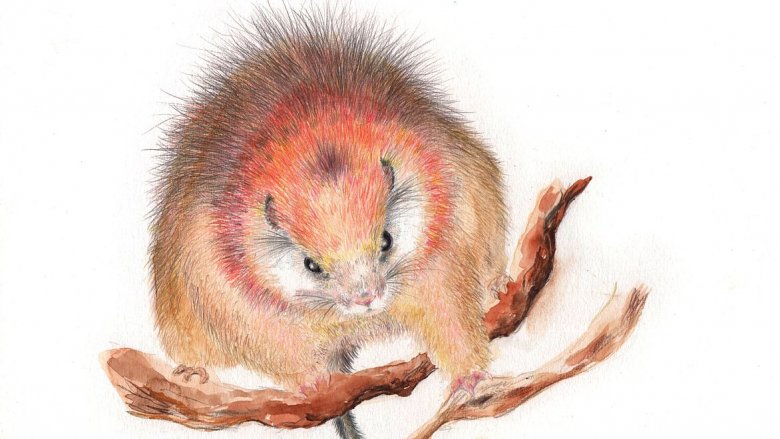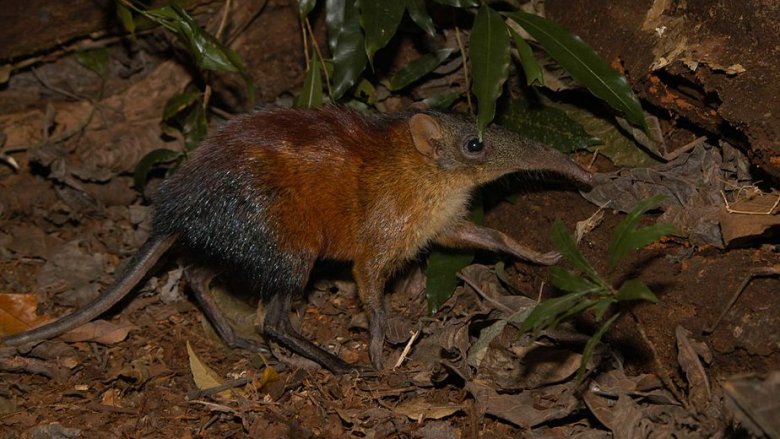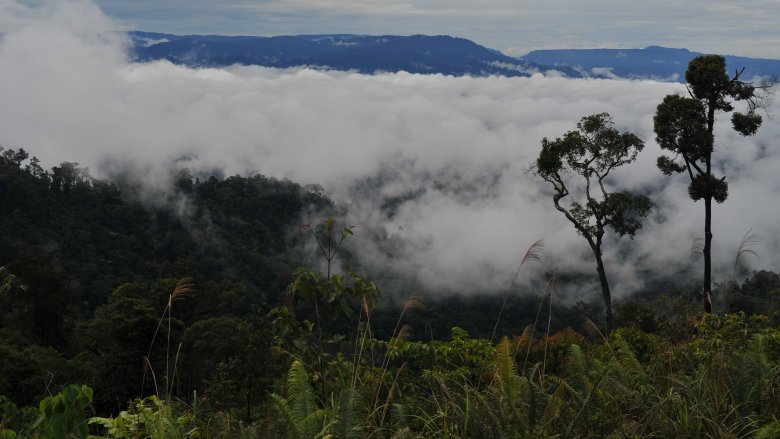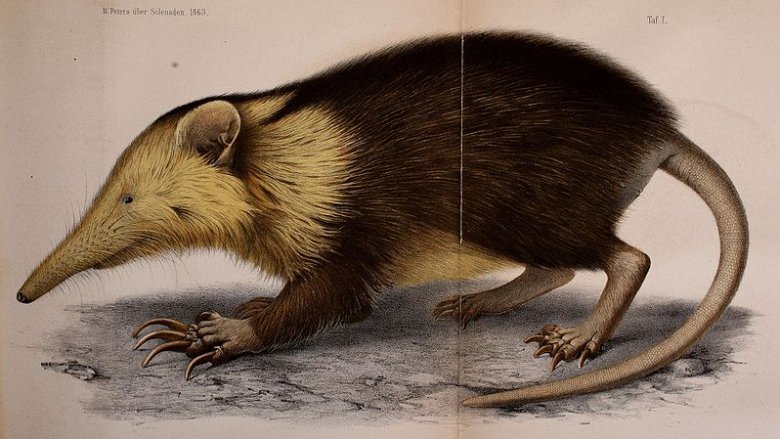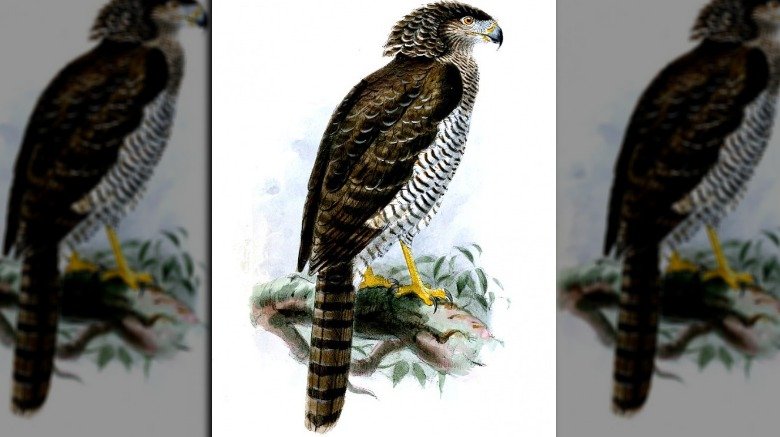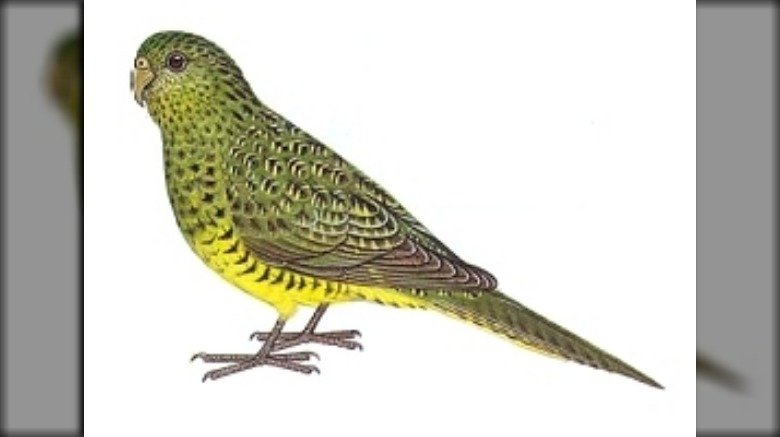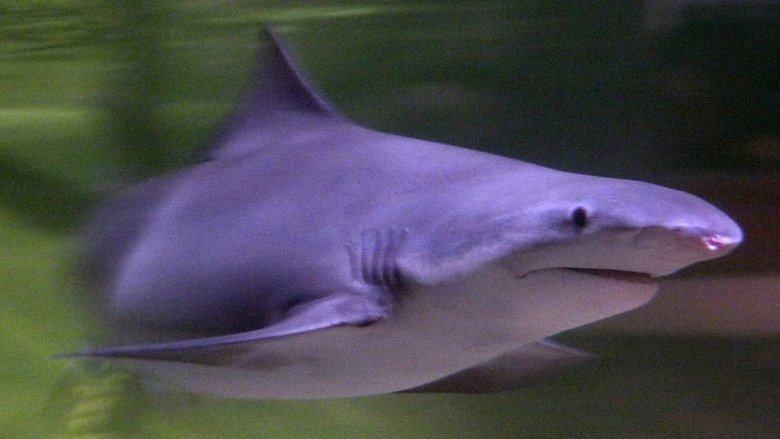Animals That Almost No One Has Ever Seen
In a world of zoos, National Geographic, and Wikipedia, it's hard to believe there are any animals left anywhere that we don't know about. But here's the bizarre truth: Every year, scientists discover around 15,000 new species. So far, they've managed to catalog and name more than 1.3 million Earth-dwelling creatures, and there are probably a total of around 8.7 million, give or take. So not only are there a lot of creatures on this earth that have yet to be "discovered" (or really, observed) by modern scientists, there are also way more undiscovered species than there are discovered ones, most of which would qualify as "rarely seen" by humans. So let's just say that this is not a comprehensive list.
Now, for the purposes of this particular article, we've mostly stuck with animals that are either cute and fuzzy, super awesome and impressive, just plain weird, or sharks. Keep in mind that there are like a bajillion species of insect alone that didn't make the list because most people would rather not read about insects. So for every one of these animals that almost no one ever sees, there are probably thousands of others that also no one sees. How's that for mind-blowing?
The world's most elusive cat
Most of us are secure in our knowledge of the world's cats: There's the lion, the tiger, the leopard, and the cheetah, their American counterparts the bobcat, the lynx, and the mountain lion, and there's the one that lives in your house, enjoys ambushing your exposed ankles, and for some reason still gets a square meal twice a day. But that's actually only a small percentage of the almost 50 species of feline that roam our planet.
The most elusive of all the world's cats is the African golden cat, which is somewhere between your beloved ankle-scratcher and Shere Khan. Business Insider describes it as "medium-size," or about twice as big as your cat, depending on how much Fancy Feast your bruiser puts away. It's lean and faintly spotted like a leopard, and it would much rather hide away in the forest than have anything to do with human ankles.
The African golden cat was first described in 1827, but it's so elusive that no one managed to photograph it until 2002. And video wasn't available until almost a decade after that, when "camera traps" started capturing footage of African golden cats. Even so, the animal remains so hard to spot that no one is sure just how endangered it is. One researcher even said that in four years of studying the cat, she's only ever seen it one time.
The Asian unicorn
Back in 1902, everyone was pretty shocked to learn that the mountain gorilla wasn't a myth, and since then there have only been a handful of large mammals "discovered" by modern scientists. One of the most recent is the saola, which was first described in 1992 after scientists found its skull in someone's house and realized they were looking at a brand-new-to-modern-biologists species.
The saola is an ungulate (a hoofed mammal) living in Vietnam, but it tends to die in captivity (two specimens captured in 1993 only lasted a few months) and is so elusive that it's been nicknamed the "Asian unicorn." It was last sighted in 1998, and then not until 15 years later, when a camera trap finally proved that it hadn't actually gone extinct. According to the Guardian, scientists believe there may be fewer than 100 saola remaining in the wild, and they are believed to be extremely vulnerable to poaching. Biologists hope to capture a breeding pair so they can try the whole captivity thing again, since that is really their only hope of being able to help save the species.
The kraken (usually called 'giant squid,' but same thing)
Stories about giant squid have been around forever, and until recently we thought they were totally made up by sailors who either needed an explanation for the disappearances of entire ships or really wanted to impress someone with tales of adventure at sea. According to the Smithsonian, it wasn't until the mid-19th century that scientists finally started to realize that maybe the stories were true, or at least loosely based on a living creature.
Large, tentacled beasts have been washing up on beaches for centuries, but no one thought to actually hang onto one until a French warship encountered a dying giant squid in 1861, decided to make it even more dead, and then saved its mostly mutilated corpse for posterity. A decade later there was even more evidence — two giant squids washed up in Newfoundland.
Even so, you can't just get on a boat and go squid watching. Most people have never seen a giant squid because they live in the deep sea. Despite a century and a half of knowledge of their existence, no one was able to photograph a living one until 2004, when researchers in Japan finally captured images that did not involve either a dissection table or a dirty beach. Fortunately, those researchers were not eaten by their subject, or taken to Davy Jones' locker, so the giant squid is probably not the terror of the high seas it was once thought to be. Whew.
A rat that is actually cute and probably doesn't carry plague
So, who cares about rats. They carry diseases and wreck the stuff you thought was safely stashed away in your shed, and they poop on things for fun. Oh and they also carry plague. With all due respect to those who love all the world's creatures, the extinction of the common rat probably would not really bother most people.
Not all rats are like the ones that live in your shed, though. Some of them are actually kind of cute, like the red-crested tree rat, but you'll never get to see one because almost no one gets to see one.
According to Wired, the red-crested tree rat lives in Colombia, and until a recent sighting it had been more than 100 years since anyone had seen a live one. In 1898, a pair was trapped and studied, but probably not released because scientists in 1898 usually liked to dissect things. After that, the other rats were all, "We're not going anywhere near humans again because of what happened to Remy and Emile," and no one saw a red-crested tree rat again until 2011. When it finally made its reappearance, it just kind of wandered into a group of conservationists one day as if no one had ever been dissected. Unless you plan to join the team at the El Dorado Nature Reserve, though, you probably won't ever be so lucky.
Is it ugly or cute?
Some rat-like creatures are cute, but this vaguely rat-like creature isn't. Or maybe it kind of is? It kind of looks like a tiny, fur-covered elephant but without any of the charm. Looking at it, it's really no wonder that elephants are terrified of rodents (or more accurately, rodent-like creatures), especially if they've ever encountered one that's hairy, miniature version of themselves.
The world's largest of all the known species of elephant shrew is the gray-faced sengi, which weighs in at a whopping 1.75 pounds. No one knew about this particular elephant shrew until 2005, when an image of one was captured on (you guessed it) a camera trap, which is a device that appears to be way better than actual biologists at discovering and photographing rare and unknown species.
The gray-faced sengi is actually the second-most threatened of all known elephant shrew species, but scientists really don't know very much about it. It's naturally elusive — mostly because it has to be — which makes it hard to study. The elephant shrew got its name for its looks, but it is also literally a relative of the common pachyderm. In fact according to Science News, the elephant shrew is more closely related to elephants than it is to actual shrews. Go figure.
All those colors can't hide your warts
Conservation International has a "top 10 most wanted" list, but don't worry, they're not after you and your deerskin shoes. Their top 10 most wanted list is for frogs. Because evidently, there has been a rash of armed robberies and other violent crimes perpetrated by Kermit and his cronies. Just kidding.
Actually, the Conservation International list consists of endangered or rarely-seen frogs and toads, like the Bornean rainbow toad, which lives in Malaysia and hadn't been seen since 1924, until it was seen in 2011 by researchers in the eastern Sarawak state in Borneo. The Bornean rainbow toad is pretty, if you can use that adjective for anything that has that many warts. But if you can overlook the warts, there's its striking green, red, and yellow coloring, which acts as pretty danged impressive camouflage in a landscape that is mostly full of greens, reds and yellows. Maybe that's why no one has seen one since 1924.
According to the Guardian, the biologists who found the toads have declined to reveal where, exactly, they were, which makes sense because you don't really want a rash of toad photographers and people trying to collect on that most-wanted frog bounty stomping around in the mountains of Borneo or anything. So for now, we'll just have to be content with the knowledge that the Borneo rainbow toad is still at large.
This animal is kind of asking to be extinct
For the average human, small mammals usually elicit exclamations of adoration (except for the aforementioned rats and other gross rodents), and we don't usually think to be afraid of them. There are a few small mammals that possess venom, though, just like snakes and spiders do. One of them is the bizarre and allegedly-from-this-planet platypus — the males actually carry venom in spurs on their hind legs, which they use to paralyze opponents during mating season. Another is the Cuban solenodon, which looks rather like a larger, hairier, and more evil version of an elephant shrew. Until recently, scientists thought the solenodon was extinct, because there have only been a few scattered reports of sightings since the 1980s. Then in 2003 someone caught one.
That seems pretty ballsy when you consider that the solenodon, like the platypus, is actually venomous. Unlike the platypus, which only has venom during mating season, the solenodon possesses permanently venomous saliva, which it uses to subdue its prey. (Its prey, by the way, are worms, so maybe the worms in Cuba are particularly speedy or something.)
According to Scientific American, capturing this specimen would probably not put the researchers in any actual danger, since the solenodon is kind of a wimp and tends to stop running and hide its head when confronted by a predator, which hey, seems like a pretty valid reason for its near-extinction. But you didn't hear that from us.
The badass bird that rarely shows itself
Finding a toad or a weird rat-like thing that no one has seen in decades is almost certainly a thrill if you're a herpetologist or a weirdratlikethingologist, but most of the rest of us would rather see something really cool and impressive that doesn't often make itself known to ordinary humans.
How about an eagle? In Madagascar, there's a raptor called the Madagascar serpent eagle, which lives in the sub-canopy of the northeastern rainforests. According to The Eagle Watchers: Observing and Conserving Raptors around the World, this particular bird is "one of the most rarely seen raptors in the world." Like many of its rarely seen cohorts, the eagle was thought to be extinct until the 1990s, when a research team found one of its nests on the Masoala Peninsula and was then able to capture and radio-track an adult member of the species.
Since then, scientists have been trying to learn more about the elusive Madagascar serpent eagle, which seems to rival Bigfoot in its ability to show up where people can see it and then not be photographed. Researchers have managed to find enough evidence of the Madagascar serpent eagle to know that its range is wider than previously believed, and yet it's impossible to tell just how many of them there are or how endangered they might be.
The very mysterious 'dumpy oversized budgie'
The Madagascar serpent eagle may be "one of the most rarely seen raptors in the world," but Today I Found Out says the night parrot is "the most mysterious and enigmatic bird on Earth," so, beat that Madagascar serpent eagle. Of course, the Madagascar serpent eagle is a super badass raptor, and the night parrot, despite its name, is a "dumpy oversized budgie." So it loses a couple coolness points, despite all the mystery and enigma.
The night parrot lives in the deserts of western Australia and Queensland, where no human being without a bowie knife and a tall glass of Foster's would ever actually want to go. Instead of living in trees like normal, self-respecting parrots, it hides in the brush on the ground, where it eats seeds and hopes no one will notice it.
What's odd about the night parrot is it was once common, but no one really sees them anymore, and scientists don't know the reason why. Some people think the bird was displaced by humans; others think it's still as common as ever, just really good at hiding. Anyway, there were no documented sightings of the night parrot between 1912 and 1990, when it was "rediscovered" by a couple ornithologists who found a dead one when they randomly pulled off a highway in the Australian wilderness. Never stop questioning, scientists.
Freshwater ... sharks??
If you have kids, they've probably asked you at some point if they should be afraid of sharks while they're in their favorite freshwater swimming hole. Because sharks will forever haunt the nightmares of all small children, and thanks for that, Steven Spielberg. Anyway, when they asked you that question, you probably happily reassured them that no, sharks don't live in freshwater, and then they went on swimming.
And then you read this article, and you found out that sharks do, in fact, live in freshwater. In particular, the speartooth shark, one of the world's most elusive shark species, lives in the tropical rivers of Australia and New Guinea. According to New Scientist, no one saw a wild, live adult of the species until 2015, when two of them were captured and tagged near the mouth of the Wenlock River. Before that, researchers had only ever seen newborns.
The speartooth shark isn't the only species of freshwater shark — there's the northern river shark, which also lives in the rivers of Australia and New Guinea, and the Ganges shark, which lives in India, Pakistan, Nepal, Borneo, and Myanmar. So when your kids ask you that question again, because shark-fearing kids will never be satisfied with the first answer, you can safely reassure them that sharks don't live in freshwater — at least not in America.
Rarely seen, sometimes heard
Most of us are familiar with a few wild dog species, like the wolf, the coyote, and the dingo. Other wild dogs species are uncommon enough that you might have never heard of them — the raccoon dog, for example, which looks like a freaking raccoon but is not a raccoon, nor is it even closely related to a raccoon.
Even more obscure than the raccoon dog is the New Guinea singing dog, which lives in the remote mountains of New Guinea and is a relative of the Australian dingo. The animal gets its name from its unique vocalizations, which the New Guinea Singing Dog Conservation Society describes as "a wolf howl with overtones of whale song."
New Guinea singing dogs are so elusive that it's more common to hear one than to see one, and they've only been photographed twice in the wild, once in 1989 and then again in 2012. They are able to escape detection precisely because of where they live — in the heavily forested mountains of West Papua.
If you want to see a New Guinea singing dog, there are zoos in the United States that are working on breeding them in captivity, though not all of them have placed their specimens on exhibit. So technically, these animals only belong on this list in the sense that almost no one has seen them in the wild, but they're still pretty wonderfully mysterious.

